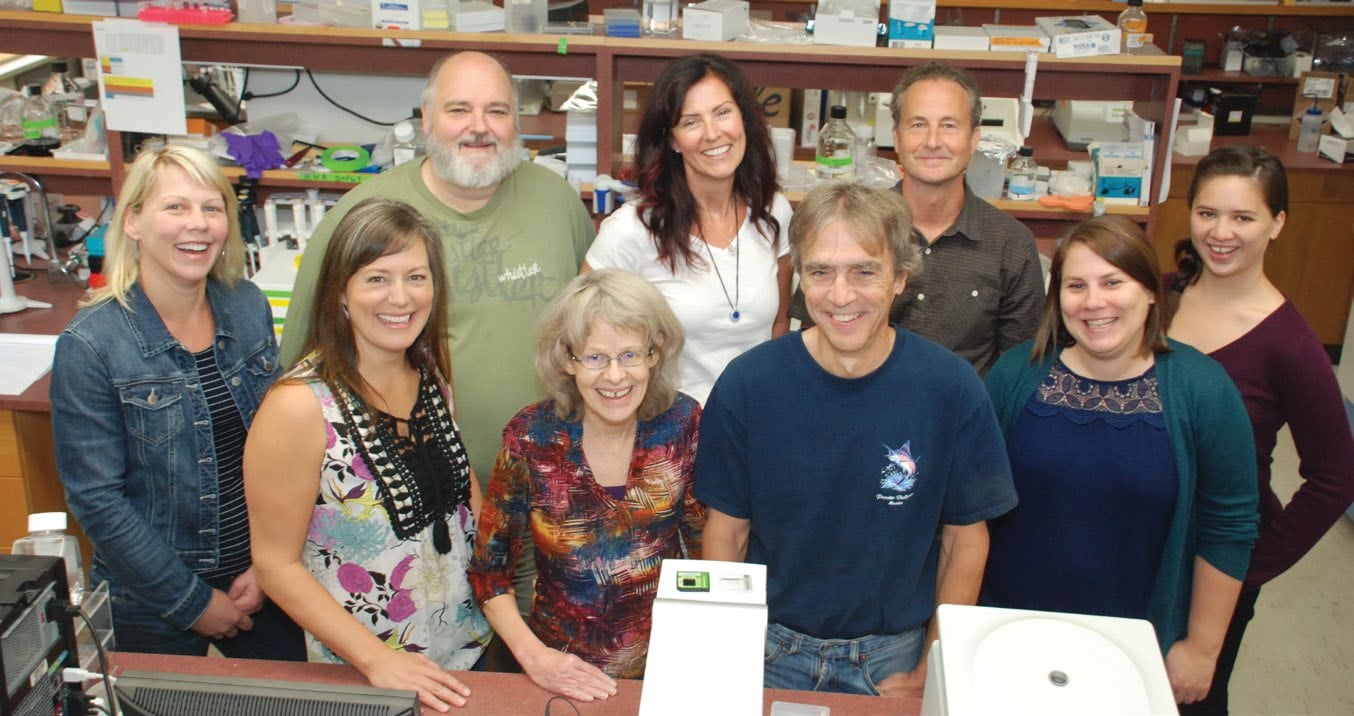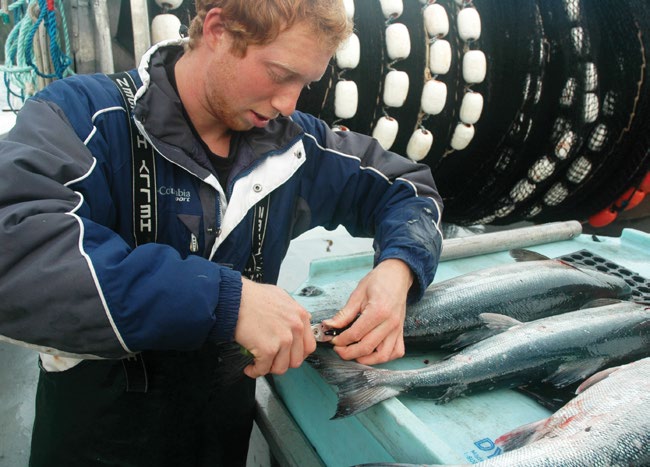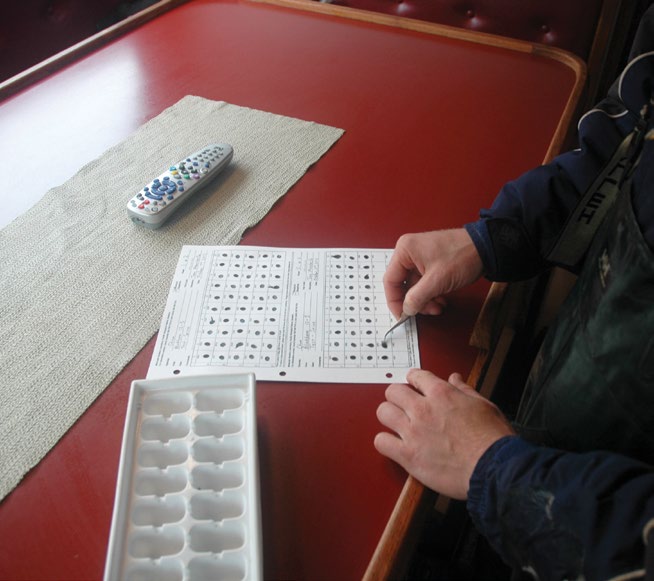Canada’s Molecular Genetics Laboratory at the Pacific Biological Station uses DNA analysis to identify and track salmon from different hatcheries. Automated NGS has enabled the laboratory to introduce parentage-based tagging, a cost-effective alternative to the coded wire tag system.

The Pacific Biological Station in Nanaimo, British Columbia, is part of a network of nine major scientific facilities operated by Fisheries and Oceans Canada, the government agency responsible for the management of Pacific salmon fisheries. The oldest fisheries research center on the Pacific coast, it is home to the Molecular Genetics Laboratory (MGL), which is responsible for determining Pacific salmon population structure and estimating stock compositions in mixed-stock salmon fisheries.
The abundance of Chinook and Coho salmon in British Columbia has been enhanced by production from hatcheries, with a portion of the juveniles marked with coded wired tags (CWTs) prior to release. If an individual containing a CWT is recovered from a fishery, its age and hatchery of release can be determined. However, tagging with CWTs can be expensive, the tag cannot be retrieved without killing the fish, and identification of hatcheryproduced salmon is incomplete, as not all fish are tagged. An alternative, more cost-effective approach is parentagebased tagging (PBT), which involves genotyping of hatchery broodstock. Establishing a database of broodstock genotypes from each hatchery allows the offspring to be non-invasively sampled to identify the hatchery and brood year according to parentage. Once complete, all juvenile fish are effectively tagged and can be traced to a specific hatchery.
"I can foresee that [NGS] is going to become the way of the future in a lot of applications."
The MGL has been using DNA analysis since the early 1990s, as research scientist Terry Beacham explained: “The catch of Pacific salmon is governed by the Pacific Salmon Treaty between Canada and the United States. To adhere to the terms of the treaty, it’s important to determine the origins of both Chinook and Coho salmon in fisheries. Historically, this has been done using CWTs, but can now be achieved with PBT technologies. PBT gives a more refined estimate of stock compositions than using CWTs, helping to determine the contributions of each hatchery to commercial and recreational fisheries. If there is concern about conservation of a particular stock, knowing the timing and location of the stock enables the closure of specific areas at appropriate times.”
Terry continued: “Previously, stock composition was primarily determined by microsatellite analysis, and this technique is still a major workhorse in our lab, particularly for those applications where we need an answer within 24 hours. During the fishing season, we use microsatellites to analyze several thousand Pacific salmon in just a few weeks, estimating the stock composition to help decide when a fishery should be opened or closed. More recently, we have implemented automated NGS protocols, allowing hundreds of single nucleotide polymorphisms (SNPs) to be costeffectively analyzed. When we first considered using SNPs for genetic stock identification, the number of SNPs we would need to run to generate results equivalent to that of microsatellite analysis – and the cost and throughput of the platforms available at the time – meant it simply wasn’t viable. With the advent of NGS protocols, we invested in an Ion Proton™ System – enabling us to cost-eff ectively analyze several hundred SNPs at one time – and have developed methods to monitor Chinook and Coho, the main species of salmon produced in hatcheries in British Columbia.”
To take full advantage of the throughput capabilities of the Ion Proton System, and to provide additional fl exibility in the lab, the MGL invested in two Freedom EVO® 100 workstations. “Typically, we receive 100 adipose fi n punches attached to a Whatman fi lter paper. DNA is extracted from these punches either manually using the Chelex method or automated on a BioSprint instrument, ready for Applied Biosystems AgriSeq™ library preparation. Initially, DNA is amplifi ed and normalized to a concentration of 40 ng/μl using a Freedom EVO platform equipped with an Air LiHa™, before adding the primer panel to the 96-well plate using the second workstation’s MultiChannel Arm™ 96. Currently, we look at between 300 and 350 amplicons depending on the species, but hope to extend this to 500 amplicons or more. After digestion, a set of 384 barcodes is ligated to the amplifi ed products, and the pooled libraries are transferred to an Ion Chef™. This generates two sequencing-ready chips for the Ion Proton System, from which we determine the genotype of the fi sh.”
“We chose Tecan because it is a wellknown brand with a good reputation and quality products. There is also the added advantage that the company off ers MARINE BIOLOGY sequencing verifi ed, fl exible protocols for Ion AgriSeq library preparation, developed in collaboration with Thermo Fisher Scientifi c. One of our technicians attended a Freedom EVOware® training course, and the knowledge she gained from this allows her to write many scripts for users from diff erent groups, which is a real benefi t. We’ve been running the systems for about two years now, developing the workfl ow and optimizing the scripts for our applications, and can now run four chips a week – representing over 1,500 fi sh – which is a fairly good throughput. While NGS is quite a new technology in fi sheries management, I can foresee that it is going to become the way of the future in a lot of applications,” concluded Terry.

Fisheries and Oceans Canada is responsible for monitoring the Pacific salmon population

Punches are taken from the adipose fin

Samples are mounted on filter paper and sent to the laboratory
All Tecan products mentioned are for research use only. Not for use in clinical diagnostics.
To find out more about Tecan’s genomics solutions, visit www.tecan.com/genomics
To learn more about the Fisheries and Oceans Canada Pacific Biological Station, go to www.pac.dfo-mpo.gc.ca/science/ facilities-installations/pbs-sbp/ index-eng.html
Keywords:









